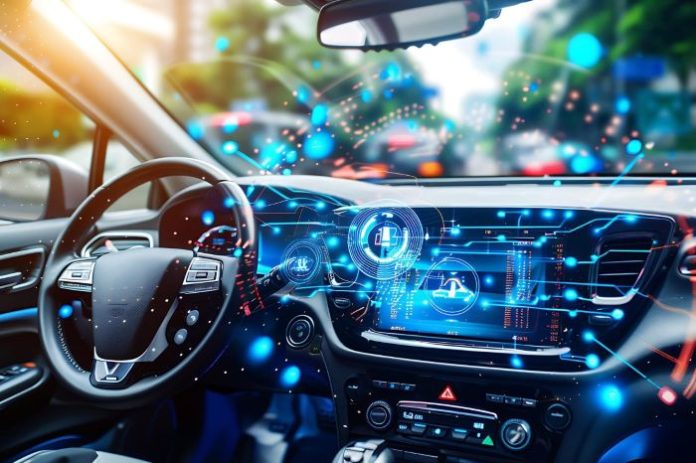You’ve probably noticed that modern driving doesn’t feel quite the same as it did even a few years ago. Cars are smarter, smoother and more connected than ever.
The moment you sit behind the wheel, you’re surrounded by systems that quietly react and assist, often without you even realizing it.
Key Takeaways
- Modern driving incorporates AI technology, enhancing safety and making experiences more intuitive.
- AI tools like adaptive cruise control and predictive maintenance improve driving by acting as reliable co-pilots.
- Increased AI capabilities may lead to fully autonomous cars that minimize human error and improve traffic flow.
- AI also promotes eco-friendly driving by analyzing patterns and optimizing routes to reduce emissions.
- The evolution of driving data helps personalize car insurance, rewarding safe driving habits through telematics.
Table of contents
AI On the Road
New technology doesn’t just make your car clever; it makes your experience on the road more intuitive. Adaptive cruise control, for instance, learns your driving style and adjusts the car’s speed to match traffic flow. Lane-keeping assistance gently nudges you back when you drift too close to the edge. These systems don’t replace your judgement but act like a co-pilot that never gets tired or distracted.
Beyond what happens behind the wheel, AI also manages things you might not see. Predictive maintenance, for example, uses data from sensors to warn you before a part fails. That means fewer surprise breakdowns and less time spent waiting for roadside recovery.
Many newer vehicles now integrate AI-driven navigation that learns your routine, suggesting quicker routes based on your habits and live traffic data. These tools save you time and fuel, but more importantly, they make driving feel less stressful.
The Link Between AI and Safer Roads
By processing information faster than any human could, AI can spot dangers you might miss. If a cyclist suddenly appears from behind a parked car, the system can brake in milliseconds. That speed of response often prevents collisions that might otherwise happen.
AI also helps reduce human error, a big cause of road accidents. Features like driver monitoring systems detect when you’re getting drowsy and prompt you to take a break. In connected cars, technology can even communicate with other vehicles to warn of hazards ahead. You still stay in control, but with an extra layer of protection working quietly in the background.
Over time, this builds a feedback loop where fewer accidents mean better data and better data leads to smarter systems that can predict and prevent even more.
The Emergence of Full Autonomous Cars
With the ongoing development of AI in modern driving, we are getting closer to the future when cars will drive independently. The technology of self-driving, which is undergoing testing in various companies, such as Tesla, Waymo, and others, is a combination of high-level sensors, radar, and machine learning that perceives the complex road conditions. These systems are able to identify traffic lights, pedestrians, as well as any unforeseen objects. Although fully autonomous vehicles are not in the mainstream yet, they are making advancements towards a time when the role of the human error in the driving process can be virtually eliminated.
In urban areas, the cars can be used to minimize congestion by streamlining traffic and talking directly to infrastructure, e.g. smart traffic lights. Autonomous cars would also deliver new freedom and independence to the people who are either elderly or disabled, making it safer and more inclusive in terms of transport.
Environmental Effectiveness and Impact
Driving is becoming safer, and it is also becoming green with AI. Smart systems have the ability to study driving patterns to provide alternative routes that are more fuel-efficient or promote smoother acceleration to reduce carbon emissions. The AI-controlled electric vehicles will be able to control battery consumption more effectively and even know when to charge the battery with the renewable energy sources. When these innovations are scaled to larger magnitudes, they may contribute significantly to the reduction of the carbon footprint of road transport.
The Human Touch of a World Run By AI
Human factors are necessary despite all the technological advances. In other words, AI will not eliminate human decision-making, but it will assist with it. It is the combination of a driver and technology that makes the experience of modern driving what it is: a harmony of instinct, consciousness, and accuracy of machines.
What Does This Mean for the Future of Car Insurance?
Real-time data from sensors and driving behavior analysis are giving insurers a clearer picture of how safe your modern driving actually is. This shift makes policies more personal and fairer which means no longer paying the same premium as someone with riskier habits.
Telematics insurance uses AI to track your driving patterns and reward careful behavior. If you brake smoothly, keep to speed limits and drive mostly during safer hours, you could see lower premiums.











